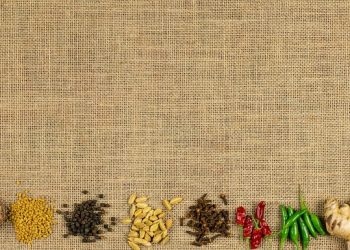Did you know that sage, a common herb in many kitchens, has a rich history not just in flavoring food but also in promoting digestive health? While most of us might think of sage as an ingredient for Thanksgiving stuffing, this plant has much more to offer, especially when it comes to gut balance. In this article, we’re diving into five savory ways to harness the power of sage for digestive harmony.
Contents
1. Sage-Infused Broths: A Comforting Start
The Benefits
Sage-infused broths are a fantastic way to incorporate this herb into your diet. Broths made with sage can be particularly soothing for our digestive systems. Sage has been traditionally used to reduce bloating and gas, and its anti-inflammatory properties can help calm an upset stomach.
How to Make It
Creating a sage broth is simple:
-
Ingredients:
- 6 cups of water
- 1 onion, chopped
- 3-4 cloves of garlic
- A handful of fresh sage leaves (or 2-3 teaspoons dried)
- Optional: carrots, celery, or other vegetables
-
Instructions:
- Combine all ingredients in a large pot and bring to a boil.
- Reduce heat and let simmer for at least 30 minutes.
- Strain the broth and enjoy it warm as a drink or as a base for soups.
Pros and Cons
While the benefits of sage-infused broths are substantial, it’s essential to note that some people may experience allergic reactions. Always consult with a healthcare provider if you’re unsure.
2. Sage Tea: A Digestive Elixir
The Benefits
Sipping on sage tea is another way to enjoy the digestive benefits of this herb. Sage tea can help stimulate digestion and alleviate issues like indigestion and heartburn.
Brewing Your Tea
-
Ingredients:
- 1 tablespoon of fresh sage leaves (or 1 teaspoon dried)
- 1 cup of boiling water
- Honey or lemon (optional)
-
Instructions:
- Steep the sage leaves in boiling water for about 10-15 minutes.
- Strain and add honey or lemon if desired.
Pros and Cons
Sage tea is generally safe, but it contains thujone, which can be toxic in large amounts. Stick to moderate consumption to reap the benefits without adverse effects.
3. Sage in Roasted Vegetables: A Flavorful Addition
The Benefits
Adding sage to your roasted vegetables not only enhances flavor but also aids digestion. Root vegetables, which are fiber-rich, paired with sage can prevent constipation and promote gut health.
Recipe Idea
-
Ingredients:
- 2 cups assorted vegetables (like carrots, sweet potatoes, and zucchini)
- 2 tablespoons olive oil
- 1 tablespoon fresh sage, chopped (or 1 teaspoon dried)
- Salt and pepper to taste
-
Instructions:
- Preheat your oven to 400°F (200°C).
- Toss the vegetables with olive oil, sage, salt, and pepper.
- Spread on a baking sheet and roast for about 25-30 minutes until tender.
Pros and Cons
Using sage in roasted veggies is a fantastic way to incorporate it into your meals. However, if you’re not a fan of its strong flavor, start with smaller amounts and adjust according to your taste.
4. Sage-Infused Olive Oil: A Versatile Dressing
The Benefits
Sage-infused olive oil can be a delightful addition to salads and pasta dishes, providing a punch of flavor while promoting digestive health. Olive oil itself is known for its healthy fats and can help with nutrient absorption.
Making Sage-Infused Oil
-
Ingredients:
- 1 cup of olive oil
- 2-3 tablespoons fresh sage leaves (washed and dried)
-
Instructions:
- Combine olive oil and sage in a small saucepan.
- Heat gently for about 10 minutes, ensuring it doesn’t boil.
- Let cool, then strain into a bottle.
Pros and Cons
While this infusion is delicious and healthy, be mindful of portion sizes. Olive oil is calorie-dense, and using too much can offset your dietary goals.
5. Sage in Stuffings and Sauces: A Savory Tradition
The Benefits
Sage has long been a staple in holiday stuffing recipes. Its robust flavor can enhance dishes while also promoting digestive harmony. The fiber content in stuffing, especially if made with whole grains, combined with sage can help in keeping your digestive system regular.
Recipe Idea
- Savory Stuffing:
- Use your favorite bread, add sautéed onions and celery, and mix in chopped sage for a delightful stuffing.
Pros and Cons
While stuffing is often associated with special occasions, it can be enjoyed year-round. Just be cautious with portion sizes and ingredients, as some traditional recipes can be heavy.
FAQs
1. Is sage safe for everyone to use?
Most people can safely use sage in moderation. However, those with allergies or specific medical conditions should consult a healthcare provider.
2. How often should I consume sage for digestive benefits?
Incorporating sage into your diet a few times a week can promote digestive health, but balance is key. Overconsumption may lead to adverse effects due to thujone.
3. Can sage interact with medications?
Yes, sage may interact with certain medications, especially those affecting blood sugar levels. Always consult your healthcare provider before adding new herbs to your routine.
4. Are there any side effects of using sage?
While sage can be beneficial, excessive consumption may lead to nausea, vomiting, or even seizures due to thujone. Stick to moderate amounts.
Conclusion
Sage is more than just a flavorful herb; it’s a potent ally for digestive harmony. Whether you’re sipping sage tea, enjoying a warm broth, or elevating your meals with sage-infused olive oil, incorporating this herb into your diet can promote gut health. Keep experimenting with these savory ways to use sage, but always listen to your body and consult with a healthcare provider if needed.
Remember, your gut health is essential, and every small step counts towards achieving balance. So why not start with a sprinkle of sage today?
This article is for educational purposes only and is not a substitute for professional medical advice. Always consult a qualified healthcare provider before making changes to your health routine.
References
-
Figueirinha, A., de Oliveira, M. C., & Ribeiro, C. A. (2019). Effect of Salvia officinalis L. on gastrointestinal motility. Journal of Ethnopharmacology, 240, 111935. https://doi.org/10.1016/j.jep.2019.111935
-
Mayo Clinic. (2023). Sage: Health Benefits and Nutritional Information. Retrieved from https://www.mayoclinic.org/healthy-lifestyle/nutrition-and-healthy-eating/in-depth/sage/art-20448290
-
National Institutes of Health. (2022). Herbs at a Glance: Sage. Retrieved from https://nccih.nih.gov/health/sage
-
Harvard Health Publishing. (2021). The health benefits of herbs and spices. Retrieved from https://www.health.harvard.edu/staying-healthy/the-health-benefits-of-herbs-and-spices
Get Your FREE Natural Health Guide!
Subscribe now and receive our exclusive ebook packed with natural health tips, practical wellness advice, and easy lifestyle changes — delivered straight to your inbox.














